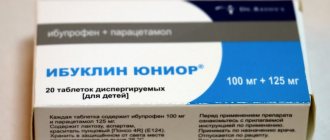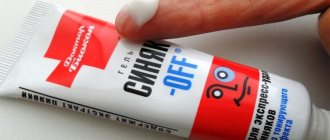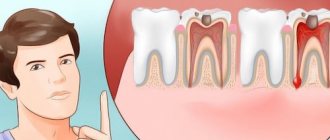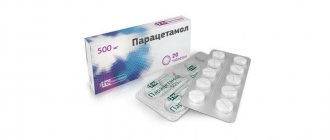- Three-stage pain correction system
- Types of painkillers
- How to relieve pain: a description of the stages of a three-step scheme
- How often does cancer pain occur?
- What is the reason for failure in pain treatment?
- Technologies for managing chronic pain syndromes
- Painkillers for stomach cancer
- Painkillers for lung cancer
Often the first and only symptom of cancer is pain. It causes suffering to the patient, reduces the quality of life, leads to depressive disorders, suicidal intentions and actions.
The fight against pain is a pressing problem in oncology. In order to effectively cope with pain, the doctor must correctly assess its causes, nature, and intensity.
At Euroonko, the area of pain medicine is very well developed. Our doctors use all available methods, including innovative ones.
Three-stage pain correction system
The main method of treating pain in oncology is drug therapy. In the practice of Euroonko, a three-stage pain relief system of non-narcotic and narcotic analgesics is used, which allows you to effectively relieve pain and keep it under control. We take into account the recommendations of the World Institute of Pain (FIPP WIP, USA), the European Federation of the International Association for the Study of Pain (EF IASP).
The method consists of sequential use of analgesics of increasing strength in combination with adjuvant therapy as the pain intensity increases. An important principle is to begin pharmacotherapy immediately when the first signs of pain appear, before a complex chain reaction develops that leads to chronic pain syndrome. The transition to a stronger painkiller is made when all the drugs of the previous step are ineffective in their maximum dosages.
Types of painkillers
Pain relief begins with the prescription of non-steroidal anti-inflammatory drugs (NSAIDs) in tablet form. These include Nurofen, Eferalgan, Nimesil, Diclofenac, etc. If they are ineffective, then at the second stage, combination drugs are prescribed to eliminate moderate pain. They include weak opiates and non-narcotic analgesics. Tramadol is most often prescribed from this group due to its effectiveness and ease of use. The third stage of pain therapy involves the prescription of narcotic analgesics, which help cope with even severe pain. These include buprenorphine, morphine, fentanyl, and omnopon.
Also, corticosteroids - preparations of adrenal hormones - are often used as analgesics. They have a powerful anti-inflammatory effect, especially important for pain caused by nerve compression, headaches caused by intracranial hypertension, and bone pain.
For each patient, medications are selected individually, so there is no universal scheme.
At any stage of pain therapy, analgesics must be taken regularly by the hour. The dose is adjusted taking into account the type and intensity of pain. If the drug becomes ineffective, it is advisable to replace it with an alternative drug of similar strength, but recommend it to the patient as more powerful.
Corticosteroids - preparations of adrenal hormones - are often used as analgesics. They have a powerful anti-inflammatory effect, especially important for pain caused by nerve compression, headaches caused by intracranial hypertension, and bone pain.
Anesthesiologist-resuscitator Vadim Sergeevich Soloviev about opioid analgesics:
Our doctors follow the principles of pain therapy proclaimed by WHO:
- “By mouth” (orally)
means that all injectable forms of analgesics should be excluded and therapy should be carried out using non-invasive dosage forms (tablets, capsules, syrups, transdermal therapeutic systems, rectal forms of drugs, etc.). - “On the clock”
- analgesics should be prescribed regularly according to the schedule, in accordance with the duration of the drug’s effect, without waiting for the development of severe pain, excluding the possibility of “breakthroughs” of pain. - “Ascending”
- the selection of drugs for pain relief is carried out from non-opioid analgesics for mild pain, “mild” opioids for moderate pain and strong opioid analgesics for severe pain, as the pain intensity increases, in accordance with the “WHO pain management ladder” - “Individual approach”
- implies the need for an “individual” selection of an analgesic and is based on the selective selection of the most effective analgesic in the required dose with the least side effects for each individual patient, taking into account the characteristics of his physical condition. - “With attention to detail”
- involves taking into account the characteristics and details of each patient, of course, prescribing co-analgesics and adjuvant agents as the need arises, and monitoring patients.
Rating of painkillers
When compiling the top rating, we held a series of consultations with leading Russian doctors on the topic of which tablets anesthetize pain of varying intensity and etiology. Taking into account their practical experience, leaders in efficiency were identified, and criteria for selecting nominees were outlined:
- Content;
- Principle of operation;
- Speed of onset of effect;
- Duration of analgesic effect;
- Conditions of use;
- Age restrictions, contraindications;
- Price, manufacturer company.
The result of the comparative analysis was a top list of 13 positions. For convenience, we have divided it into 2 subsections - drugs sold in pharmacies without a prescription, as well as prescription strong painkillers for severe symptoms. Review monitoring showed the pros and cons of the nominees.
How to relieve pain: a description of the stages of a three-step scheme
Low pain therapy
The patient is prescribed non-opioid analgesics: NSAIDs (Ibuprofen, Diclofenac, Ketoprofen, etc.), Paracetamol. When choosing a drug, the toxicity to the liver and kidneys inherent in all non-opioid analgesics, as well as the gastric toxicity of non-selective NSAIDs, and the risks from the cardiovascular system when using selective NSAIDs are taken into account. It is advisable to accompany the use of first-line drugs with adjuvant and symptomatic therapy: ion pump blockers, corticosteroids, antispasmodics, benzodiazepines, antihistamines, etc.
Therapy for “moderate” pain
The oral route of drug administration is preferred if the patient can take the drugs by mouth. For patients with mild to moderate pain in whom adequate pain control is not achieved by regular oral paracetamol or non-steroidal anti-inflammatory drugs, the addition of an opioid analgesic may provide effective pain relief without adverse side effects. As an alternative, low-dose opioid analgesics (eg, morphine, TTC fentanyl) may be used.
Therapy for “severe” pain
If the pain is intense and an opioid analgesic in combination with NSAIDs or Paracetamol is ineffective, therapy with strong opioid analgesics should be started. If they were prescribed for moderate pain, you need to increase the dose of the drug until it is effective. Registered prolonged forms of strong opioid analgesics in our country and used in our clinic are: morphine in capsules and tablets, TTC fentanyl.
Book a consultation 24 hours a day
+7+7+78
How often does cancer pain occur?
Pain occurs in 30% of cancer patients who receive treatment and in 60–90% of patients due to disease progression. The main sources of cancer pain:
- cancer itself (45–90%);
- concomitant inflammatory reactions leading to spasm of smooth muscles (11–25%);
- pain in the area of the postoperative wound after surgery (5–16%);
- concomitant pathology, for example, joint damage, arthritis (6–11%), neuralgia (5–15%).
Cancer pain syndromes are grouped:
- According to the origin of the pain flow: visceral, somatic, neuropathic, psychogenic.
- According to qualitative subjective assessment: burning, stabbing, cutting, drilling, pulsating.
- By intensity: assessed using special scales.
- Duration: acute and chronic.
- By localization: abdominal, cardialgia, lumbodynia, muscle-articular and others.
Due to significant differences in the mechanisms of pain, there is no universal analgesic to relieve all types of pain syndromes. Treatment should always be individualized.
Get rid of pain
List of effective pain relief pills
The principle of operation of most drugs within the same group is similar, but they can have completely different effects on the body.
In the presented list of painkillers you can find both expensive and very cheap drugs. Most of these products can be purchased without a prescription at your local pharmacy.
For inflammatory pain
Eliminate headaches, toothaches, and severe pain in muscles, bones and joints. They are also effective for pain after injuries and surgery. Pain syndromes of this nature are best treated with non-steroidal anti-inflammatory drugs, as well as analgesics of the combined group.
Nurofen
A drug from the NSAID group, created on the basis of ibuprofen. Nurofen is the most popular drug of all non-steroidal anti-inflammatory drugs, the mechanism of action of which is to block the synthesis of prostaglandins - pain mediators that support the inflammatory response in the body. Nurofen helps with any pain of an inflammatory nature, as well as with migraines, dysmenorrhea and neuralgia.
Nurofen copes with inflammatory pain
Contraindications: age under 6 years, 3rd trimester of pregnancy, severe heart failure, gastrointestinal bleeding, renal failure, ulcers and gastric erosion.
Price: 90-130 rubles.
Nalgesin
Blue tablets from the NSAID group, used for musculoskeletal diseases, neuralgia and myalgia, toothaches and headaches, tonsillitis, otitis media and fever. Like other non-steroidal drugs, Nalgesin relieves pain by blocking the synthesis of prostaglandins.
Nalgesin is an effective pain reliever
Contraindications: gastric erosion or ulcer, inflammation in the intestines, kidney or liver failure, gastrointestinal bleeding, hypersensitivity to the drug, pregnancy and breastfeeding, age under 12 years.
Price: 180-275 rubles.
Ibuklin
A combined drug based on paracetamol and ibuprofen, it is used for headaches and toothaches, adnexitis, bursitis, injuries and arthritis, and fever. When taking Ibuklin, pain and fever disappear due to inhibition of cycloxygenase and a decrease in the amount of prostaglandins.
Nalgesin is an effective pain reliever
Contraindications: gastric erosion or ulcer, inflammation in the intestines, kidney or liver failure, gastrointestinal bleeding, hypersensitivity to the drug, pregnancy and breastfeeding, age under 12 years.
Price: 180-275 rubles.
Ibuklin
A combined drug based on paracetamol and ibuprofen, it is used for headaches and toothaches, adnexitis, bursitis, injuries and arthritis, and fever. When taking Ibuklin, pain and fever disappear due to inhibition of cycloxygenase and a decrease in the amount of prostaglandins.
Ibuklin combination drug
Contraindications: hypersensitivity to components, stomach ulcers, gastric bleeding, age under 12 years, pregnancy and lactation.
Price: 100-140 rubles.
Movalis
A new drug from the NSAID group, approved for long-term use. Like previous remedies, it relieves fever, pain and inflammation by reducing the amount of prostaglandins in the body. It is used for various types of inflammatory pain, as well as for neuralgia and migraine.
Movalis relieves pain and inflammation
Contraindications: age under 16 years, pregnancy, lactation, gastric ulcer, hepatic and renal colic.
Price: 550-750 rubles.
For spasmodic pain
Spasmodic pain can occur for various reasons: these include migraine, diseases of the gastrointestinal tract, algodismenorrhea and some other conditions. With such pain syndrome, antispasmodics and complex painkillers with antispasmodic action will help.
Drotaverine
Inexpensive and effective tablets from the group of antispasmodics, an effective Russian analogue of No-shpa. The effect of taking them is achieved by expanding the smooth muscles of blood vessels and internal organs. It is used for gastroduodenitis, ulcers, cholecystitis, hepatic and renal colic, biliary dyskinesia, colitis and proctitis, intestinal colic and flatulence, dysmenorrhea, as well as during severe labor pains.
Movalis relieves pain and inflammation
Contraindications: age under 16 years, pregnancy, lactation, gastric ulcer, hepatic and renal colic.
Price: 550-750 rubles.
For spasmodic pain
Spasmodic pain can occur for various reasons: these include migraine, diseases of the gastrointestinal tract, algodismenorrhea and some other conditions. With such pain syndrome, antispasmodics and complex painkillers with antispasmodic action will help.
Drotaverine
Inexpensive and effective tablets from the group of antispasmodics, an effective Russian analogue of No-shpa. The effect of taking them is achieved by expanding the smooth muscles of blood vessels and internal organs. It is used for gastroduodenitis, ulcers, cholecystitis, hepatic and renal colic, biliary dyskinesia, colitis and proctitis, intestinal colic and flatulence, dysmenorrhea, as well as during severe labor pains.
Drotaverine belongs to the group of antispasmodics
Contraindications: hypersensitivity to the active substance, severe heart failure, age under 12 years, arterial hypotension.
Price: 40-80 rubles.
Sparex
An antispasmodic used for pain during menstruation, migraines, as well as for spasms of the gastrointestinal tract, intestinal and biliary colic. Approved for long-term use and has virtually no contraindications. This remedy relieves pain by releasing ionized calcium into smooth muscle cells, which expands smooth muscle and stops spasms.
Sparex is approved for long-term use
Contraindications: age under 12 years, hypersensitivity.
Price: 300-370 rubles.
Spasmalgon
A complex analgesic consisting of an NSAID, an antispasmodic and an enhancing substance. The analgesic effect is achieved by inhibiting prostaglandins and reducing the release of calcium into smooth muscle cells. Eliminates spasmodic pain in the shortest possible time, used for diseases of the gastrointestinal tract, algodismenorrhea, cystitis and pyelonephritis.
Spasmalgon complex drug
Contraindications: renal and liver failure, prostate adenoma, glaucoma and tachyarrhythmia, anemia, leukopenia.
Price: 190-255 rubles.
For oncology
In the later stages of development of a malignant neoplasm, the pain can become unbearable. Only the strongest painkillers, which cannot be purchased without a doctor’s prescription, can help get rid of it.
Ketanov
Smooth green tablets belonging to the class of NSAIDs. Ketanov is the most powerful analgesic among non-steroidal anti-inflammatory drugs, the effect of which is achieved due to a sharp decrease in the amount of prostaglandin in the body, and is comparable to narcotic painkillers. The drug is used for postoperative, postpartum and dental pain, arthrosis, oncology and injuries.
Ketanov is a strong analgesic
Contraindications: age under 16 years, stomach and intestinal ulcers, gastrointestinal bleeding, bronchial asthma, kidney disease, concomitant use with other NSAIDs.
Cost: 80-145 rubles.
Promedol
Centrally acting narcotic painkiller. It disrupts the transmission of pain impulses and also changes the perception of pain in the brain. It is actively used not only for oncological diseases, but also after surgery, for peptic ulcers and chronic pancreatitis, myocardial and pulmonary infarction, prostatitis, renal and hepatic colic, neuritis, burns and injuries.
Features of the drug Promedol
Contraindications: age under 2 years, arrhythmia, hyperthyroidism, hypersensitivity to components, alcoholism, seizures, asthma.
Price: 180-220 rubles.
Tramal
Opioid analgesic type drug. A powerful and fast-acting drug that relieves pain in a matter of minutes. The analgesic effect of Tramal is associated with blocking the conduction of pain impulses and with a distortion of the emotional perception of pain. It is used for injuries, after operations and other painful medical procedures, for pain during myocardial infarction and for oncology.
Features of the drug Promedol
Contraindications: age under 2 years, arrhythmia, hyperthyroidism, hypersensitivity to components, alcoholism, seizures, asthma.
Price: 180-220 rubles.
Tramal
Opioid analgesic type drug. A powerful and fast-acting drug that relieves pain in a matter of minutes. The analgesic effect of Tramal is associated with blocking the conduction of pain impulses and with a distortion of the emotional perception of pain. It is used for injuries, after operations and other painful medical procedures, for pain during myocardial infarction and for oncology.
Tramal opioid pain reliever
Contraindications: age under 16 years, pregnancy, breastfeeding, renal failure, epilepsy.
Cost: 350-420 rubles.
What is the reason for failure in pain treatment?
Due to the lack of specialized training in pain management, even among oncologists, and due to the perception of cancer as an incurable disease, even medical specialists often do not realize that cancer pain can be managed.
In 80–90% of patients, pain can be completely eliminated, and in the rest, its intensity can be significantly reduced. To do this, the doctor needs to take into account each of the sources and mechanisms of pain to select adequate pain therapy for cancer.
In clinical practice, we constantly encounter typical errors in the treatment of pain: unreasonably early prescription of narcotic analgesics, use of excessive dosages of drugs, non-compliance with the prescription regimen of analgesics.
Technologies for managing chronic pain syndromes
Euroonko is equipped with all the necessary equipment, including individual wearable pumps and devices for dosed administration. The clinic has the licenses and permits required by the legislation of the Russian Federation. We have a well-equipped pain therapy department staffed by physicians who specialize in pain medicine.
Use the quick links to find out about the pain relief method you are interested in:
- Pain relieving patches
- Spinal anesthesia
- Epidural anesthesia
- Catheterization techniques
- Neurolysis through the gastrointestinal tract using endosonography
- Injection of drugs into myofascial trigger points
- Fascial blocks and nerve and plexus blocks
- Radiofrequency ablation
- Neurosurgical interventions
- Patient controlled analgesia (PCA)
Pain relief for stage 4 cancer can significantly improve the patient’s quality of life, reduce, and in most cases prevent suffering. This helps to give the terminally ill patient additional time during which he can actively communicate with family and friends and spend the last days of his life without painful symptoms.
Pain relieving patches
This is a method of transdermal administration of the drug. The patch contains four layers: a protective polyester film, a reservoir with the active substance (for example, fentanyl), a membrane that adjusts the release intensity and an adhesive layer. The patch can be applied anywhere. Fentanyl is released gradually over 3 days. The effect begins within 12 hours; after removal, the concentration of the drug in the blood slowly decreases. The dosage may be different, it is selected individually. The patch is prescribed, as a rule, at the very beginning of the third stage of pain relief for oncology.
Spinal anesthesia
During spinal anesthesia, the medicine is injected into the spinal canal, subarachnoidally. This leads to a temporary “switching off” of tactile and pain sensitivity. The introduction requires a certain amount of experience from the doctor. Local anesthetics and opioid analgesics are used as pain relievers. The effect is long lasting and pronounced. Mainly used for surgical interventions, for acute, unbearable pain, it has a number of side effects on the cardiovascular and respiratory systems.
Sign up for a consultation now
Epidural anesthesia
A more gentle method compared to the previous one. The medicine is injected into the space where the spinal nerves form. The drugs are similar to spinal anesthesia. Epidural anesthesia is used for long-term pain relief when oral and parenteral methods of administration no longer provide results.
Catheterization techniques
Catheterization techniques allow for long-term, high-quality pain relief. The introduction of port systems into the epidural and subarachnoid space with the use of local, narcotic and adjuvant drugs allows for long-term relief from pain and reduces the use of other analgesics that have their own side effects.
Neurolysis through the gastrointestinal tract using endosonography
Neurolysis (neurolysis) is the process of destruction of the nociceptive (pain) nerve pathway.
One of the most effective methods is neurolysis of the celiac (solar) plexus
, which is located in the retroperitoneal space in the upper abdomen and innervates the abdominal organs: stomach, liver, biliary tract, pancreas, spleen, kidneys, adrenal glands, large and small intestines to the splenic flexure.
The analgesic is administered transgastrically - through the gastrointestinal tract; accuracy is ensured by endoscopic ultrasound control. Such methods of local anesthesia are used, for example, for pancreatic cancer with an effectiveness of up to 90%
. The analgesic effect can last for more than several months, while narcotic analgesics would have to be administered continuously using the classical method.
Injection of drugs into myofascial trigger points
Myofascial pain syndrome is expressed in muscle spasm and the appearance of painful lumps in tense muscles. These are called trigger points and are painful when pressed. Injections into the trigger zone relieve pain and improve mobility of the body area. The purpose of trigger point injections is to “break” the pain cycle of pain-spasm-pain. They successfully treat spasms of many muscle groups, especially in the arms, legs, lumbar region and neck, and head. Often used as adjunctive therapy for fibromyalgia and tension headaches.
Fascial blocks and nerve and plexus blocks
The same qualitative effect is provided by fascial blockades and blockades of nerves and plexuses.
A nerve or plexus block involves injecting a drug near the nerve that connects to the affected organ and causes pain. Peripheral blockade procedures are performed by experienced specialists using ultrasound navigation, which allows for more precise administration of the analgesic drug to the required location without affecting or damaging the nerve structures.
The use of hormonal drugs during blockade can eliminate pain for a long time, and repeated blockade can eliminate pain for several months
. Depending on the type of anesthetic, the procedure is carried out once a year, once every six months or every week. Another plus is the minimal number of negative consequences.
Radiofrequency ablation
This technology is based on selective thermocoagulation of certain nerves with special electrodes. The affected area is carefully controlled, allowing very small areas to be treated without damaging nearby motor and sensory nerves. Recovery after the procedure occurs very quickly and with almost no consequences, which allows the patient to return to normal life.
The procedure can be performed without hospitalization. Radiofrequency destruction gives a long-lasting effect that can last up to a year or more
.
The incidence of complications and side effects is very low. If the pain returns, treatment may be repeated.
Write to an oncologist
Patients with obvious mental disorders, with secondary pain or drug addiction are an unsuitable population for neurodestructive manipulations. Such patients may continue to complain of pain even if the procedure is successful. The patient must have a realistic view of the outcome of treatment. He must understand that the goal is to reduce pain, not completely eliminate it.
a diagnostic blockade is required.
. A good effect of a diagnostic blockade can predict a satisfactory result of neurodestruction. However, the same diagnostic block must be repeated at least one more time, even if the pain relief was significant, to negate the placebo effect.
If the result is not entirely clear, differential blocking should be used. In patients with widespread or multilocal pain, the outcome of treatment usually does not meet expectations. The patient should be aware that targeting one area may not achieve the desired effect and may require additional destruction to achieve maximum pain relief.
Euroonco doctors talk about radiofrequency ablation:
The procedure should be avoided on mixed nerves as it may result in loss of skin sensation and muscle weakness. Deafferentation pain can be aggravated by destruction of the damaged nerve. When pain is of central origin (spinal or higher), peripheral nerve destruction may cause an increase in pain perception due to the elimination of incoming stimulus. The best alternative in this case is neuroaugmentation with TENS or spinal cord stimulation.
Neurosurgical interventions
During the procedure, the neurosurgeon cuts the spinal or cranial nerve roots through which the nerve fibers pass. Thus, the brain is deprived of the ability to receive pain signals. Cutting the roots does not lead to loss of motor ability, but may complicate it.
Patient controlled analgesia (PCA)
This type of pain relief is based on a simple rule: the patient receives analgesics when he wants it. The scheme is based on individual perception of pain and the need to take analgesics. In European countries, RSA has been accepted as the standard for postoperative pain management. The method is simple and relatively safe
. However, patients must be thoroughly instructed.
PCA is most effective when using catheter methods (epidural, spinal anesthesia, nerve plexus block with catheter installation), as well as port systems, both venous and epidural and intrathecal.
Which painkillers are better
It is impossible to clearly choose which tablets are better. Not only the composition and principle of operation decide a lot, but even the quality of raw materials and production technology. The Vyborexperta.ru rating presents 13 current proposals, and several nominees stand out in particular:
- Nurofen forte – triple action and pronounced pain relief due to the increased concentration of NSAIDs;
- Nexemesin - prolonged pain relief, relief of inflammation, reduction of fever, help with menstruation and joint problems;
- Paracetamol is a popular choice, acceptable for use in childhood, pregnancy and breastfeeding;
- Pentalgin is a polycomposition that works to relieve spasms, relieve inflammation, and suppress pain symptoms;
- Ibuklin - emergency care for high temperatures, a wide range of pain relief, the presence of a children's form;
- Diclofenac retard Obolenskoe - good help for pathologies of the musculoskeletal system, joints, muscles, prolonged work;
- Ketonal DUO is a fast and at the same time prolonged action, a multifunctional medicine in the form of capsules, gentle on the stomach.
The pharmaceutical market offers a wide range of modern analgesics. You should not use them frequently or on an ongoing basis without your doctor's approval. They can mask the clinical picture, making timely detection of diseases difficult.
Painkillers for stomach cancer
About 70% of patients suffering from stomach cancer experience discomfort and pain. As a rule, pain is localized in the abdomen, but as the tumor progresses it can also occur in other places: in the back, ribs, bones. Neuropathic pain may occur as a symptom of paraneoplastic syndrome or a side effect of chemotherapy.
In addition to the three-step system, benzodiazepines, antidepressants, adrenal hormones (prednisolone, dexamethasone), sleeping pills, and antipsychotics are used to combat pain and discomfort in stomach cancer. For bone pain and pathological fractures, bisphosphonates are prescribed.
The doctor can perform two types of nerve blocks:
- Celiac plexus block
helps relieve pain in the upper abdomen. The conduction of pain impulses through the nerves of the stomach, liver, pancreas, gall bladder, intestines, and kidneys is blocked. - Hypogastric plexus block
helps relieve pain in the lower abdomen. During it, the nerves of the lower intestine, bladder, testicles, penis, prostate, uterus, ovaries, and vagina are blocked.
Plexus blocks can be performed using anesthetics and drugs that temporarily damage the nerves. With neurolysis, a drug is administered that destroys the plexus.
Painkillers for lung cancer
The cause of chest pain due to lung cancer can be the tumor itself or a surgical procedure. Other possible reasons:
- Metastases in the brain lead to headaches.
- Metastases of the abdominal organs lead to abdominal pain.
- Metastases in the bones lead to bone pain and pathological fractures.
- Paraneoplastic syndrome leads to neuropathic pain in different parts of the body.
- Pain is one of the side effects of chemotherapy.
In addition to pain-relieving injections for lung cancer with NSAIDs and narcotic analgesics, other drugs, nerve blocks, radiation therapy, and palliative surgical interventions help.
Book a consultation 24 hours a day
+7+7+78
Indications for use
There are a number of pain syndromes that can be treated with non-narcotic painkillers. The main ones:
- toothache;
- headache, migraine;
- post-operative pain;
- arthritis, arthrosis, back and joint pain of various etiologies;
- degenerative pathologies of the musculoskeletal system;
- neurological pain;
- gynecological pain.
Drugs in this group are ineffective in acute conditions: heart attack, renal or hepatic colic, acute abdomen. Painkillers do not work to relieve fear, excitement, anxiety (unlike narcotic substances).











